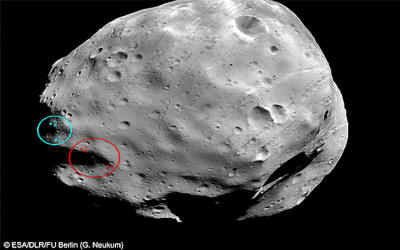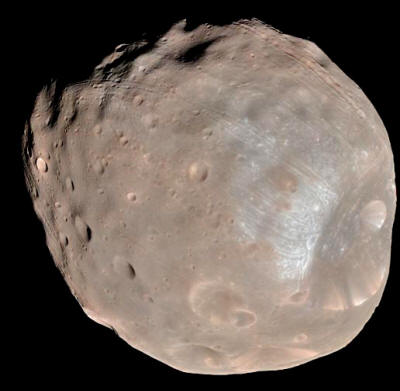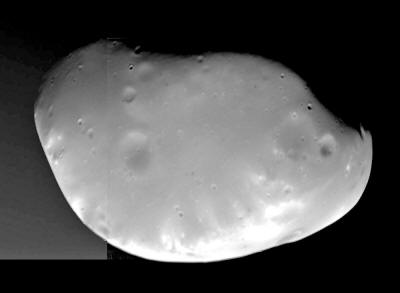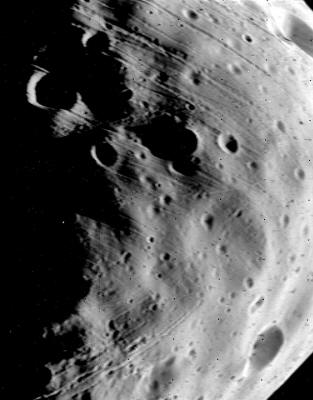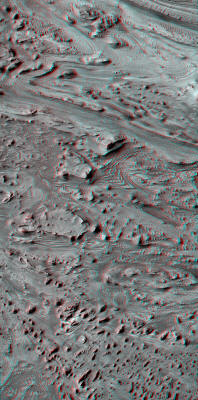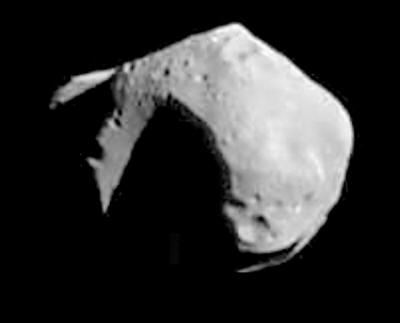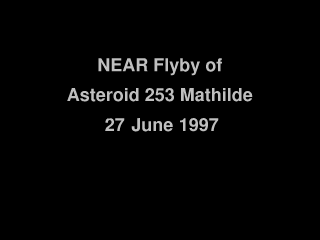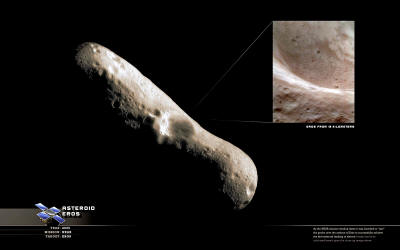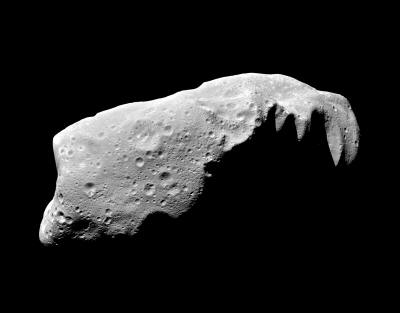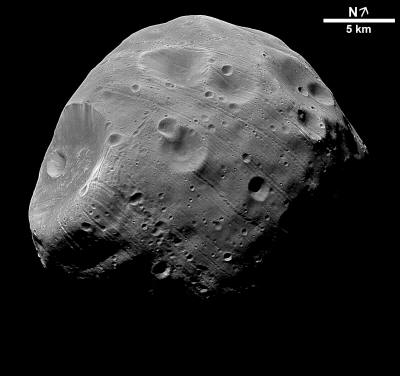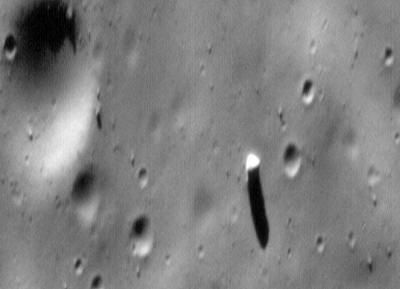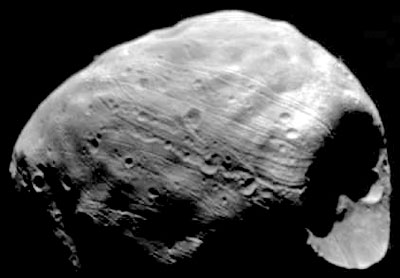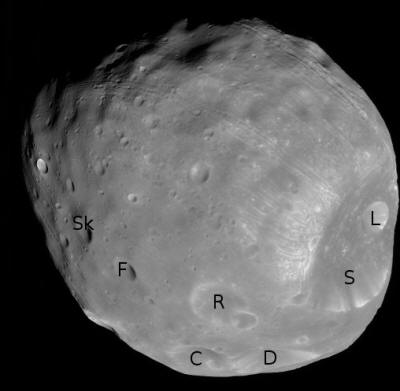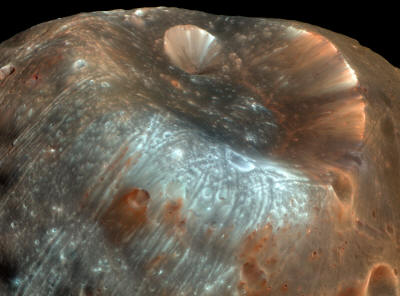|
from Thunderbolts Website
Previously considered
(blue) and current mission landing sites.
A Russian space mission will attempt to
land a sample return package on Phobos.
The small lander
will gather samples of the surface and then blast off for a
rendezvous with an Earth return vehicle.
Phobos
Deimos
Phobos and Deimos are the two moons of Mars, although Deimos is so small it cannot be readily observed from Earth. Only the Viking 2 orbiter captured close up images in 1976.
Phobos has been
extensively studied by Earth-based telescopes and by satellites in
Mars orbit (below image).
Picture of the Day articles about Mars have shown that it was once immersed in a plasma flame sufficiently large to gouge out Valles Marineris (below image).
Millions of cubic kilometers of rock and dust were blasted out from the planet at escape velocity.
Stone blocks larger than Manhattan Island fell back to Mars from a great height, shattering on impact. This explains the fields of enormous boulders with sharp edges covering millions of square kilometers.
Could it be
that moons like Phobos and Deimos, as well as asteroids like Ida,
were also born from that cataclysm?
For example, there is a hole in asteroid 253 Mathilde (below image) that should have caused it to disintegrate.
Phobos is a mere 28 by 20 kilometers in size, so
Stickney is nearly half as big.
Does the gravel pile theory best fit the
facts?
Image 1
Image 2
Image 3
Image 4
The answer is
electricity.
That electric arcs can remove material with ease is
proven by the experiments conducted by Dr. C.J. Ransom of VEMASAT
Laboratories. His plasma discharges excavate surface depressions,
scoop out material, and explode it into the air, leaving cleanly cut
features.
The
electric fields that accompanied the celestial disasters of the past
smoothed and eroded them with plasma discharges. The result is that Phobos and the asteroids mentioned are covered in dust, are defined
by huge craters, and look like they're
half-melted.
from AboveTopSecret Website
The Phobos monolith (right of center)
as taken by the Mars
Global Surveyor (MOC Image 55103) in 1998.
with Stickney Crater
to the right
C = Clustril; D = Drunlo; F = Flimnap; L = Limtoc; R = Reldresal; S = Stickney; Sk = Skyresh.
Grildrig is on the
horizon below Skyresh and Flimnap.
But, when I saw the associate picture
with the Russian story, I thought who in there right mind WOULDN'T
want us to get there ASAP.
Phobos NASA/JPL/University of Arizona/ru.wikipedia.org Enhanced-color view of Stickney Crater by the Mars Reconnaissance Orbiter.
Now look at those dents and other marks.
The Rust color added for effect? Or is a true representation of what it really looks like. Look at the photos credits. NASA is stamped right there. So it must be a true reflection of what it looks like.
How can anyone not be curious to see if it is some type of craft or artificial object.
Seems to me, from this photo, its more like than not that this particular moon is odd-at the least. And, if so, we must get to it. Them dam craters need some investigating - and the monolith, and the strafing marks...
|

